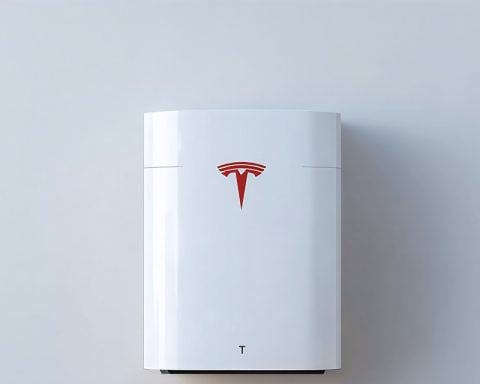- The National Electric Vehicle Infrastructure (NEVI) Formula Program has unexpectedly lost federal funding, halting efforts to enhance the EV charging network nationwide.
- This funding suspension has placed the goal of a sustainable and connected transportation future in jeopardy, affecting cities’ plans for a cleaner environment.
- The absence of reliable EV infrastructure could exacerbate range anxiety for drivers and slow EV adoption.
- Uncertainty surrounds whether the funding pause will be temporary or prolonged, raising questions about the future direction of the EV revolution.
- The situation underscores the need for continued commitment and collaboration among government, industry, and citizens to achieve a sustainable future.
An electrifying vision for the future now faces a major roadblock. The National Electric Vehicle Infrastructure (NEVI) Formula Program—once the beacon for revolutionizing the nation’s EV charging network—has suddenly lost its funding from the federal government.
This abrupt halt to the program, poised to transform highways into seamless veins of EV connectivity, comes as a jolt to the aspirations for a sustainable transportation future. The ambitions of countless cities dreaming of clean, green boulevards are now suspended in a state of uncertainty. Imagine rows of dormant charging stations along bustling freeways, once promised but now stilled, like sculptures waiting for the spark of life—a beacon that might not illuminate.
The heart of this initiative was not just about wires and pylons; it was about creating a reliable infrastructure to banish range anxiety, the fear EV drivers harbor that they’ll run out of charge miles away from a plug. Without financial support, the vision grows dimmer, leaving potential electric converts hesitating at the crossroads of adoption.
Yet amidst this pause, a question looms large: Will this freeze be a temporary chill or a prolonged cold snap for the EV revolution? It’s a moment of reckoning to reassess priorities—where will the green revolution turn next? One thing remains clear: the path to a sustainable future requires not just ambition but also unwavering commitment and collaboration across all levels—government, industry, and citizens alike.
It’s more than just a pause in a program; it’s a crucial reminder that the journey to a cleaner, greener tomorrow demands more than momentary enthusiasm. It calls for steadfast dedication to breathe life back into the promise of our electric roads.
The Shocking Funding Freeze: What’s Next for America’s Electric Roadways?
How-To Steps & Life Hacks
Building Personal EV Charging Solutions:
1. Assess Your Needs: Understand your EV’s charging requirements and daily usage to determine the type of home charger required.
2. Install a Home Charger: Consider a Level 2 charger for faster at-home charging. Consult a certified electrician for installation.
3. Optimize Charging Times: Utilize off-peak electricity hours to reduce costs. Many utilities offer discounts for charging during these hours.
Real-World Use Cases
– Urban Areas: EV charging stations are essential in high-density cities to reduce emissions and improve air quality.
– Rural Connectivity: Charging hubs can bridge vast distances, making EVs practical in more isolated regions.
Market Forecasts & Industry Trends
The EV market is projected to grow significantly. According to the International Energy Agency (IEA), global electric car sales are expected to rise from 10 million in 2020 to upwards of 145 million by 2030, contingent on government support and infrastructure development.
Reviews & Comparisons
– Tesla Supercharger Network: Known for its extensive reach and proprietary technology, offering faster charge times.
– Electrify America: Aiming to expand its network with universal chargers that cater to various EV brands.
Controversies & Limitations
– Funding Challenges: The recent federal budget impasse highlights the volatility in funding, impacting national EV infrastructure development.
– Range Anxiety: Persistent concerns among consumers about running out of battery before reaching a charger remain a significant barrier to adoption.
Features, Specs & Pricing
Home Chargers:
– Level 1: Standard outlet, slower charge time, ideally for plug-in hybrids or overnight charging.
– Level 2: Requires a 240V outlet, charges faster, prices range from $300 to $800 plus installation costs.
Security & Sustainability
– Cybersecurity Risks: As charging networks grow, securing data from cyber threats becomes a priority.
– Long-term Sustainability: Charging stations should be powered by renewable energy to maximize environmental benefits.
Insights & Predictions
Experts predict that sustained policy efforts, along with investment from private sectors, are vital for continuing the momentum in EV adoption. Collaborative infrastructure projects modelled on successful programs in the EU could serve as a template.
Tutorials & Compatibility
EV compatibility with charging standards ensures that vehicles from different manufacturers can charge seamlessly. Most modern chargers support CCS and CHAdeMO standards.
Pros & Cons Overview
Pros:
– Reduced emissions and operational costs.
– Quieter operations and lower maintenance requirements.
Cons:
– High initial investment for infrastructure.
– Limited charging stations can inconvenience longer trips.
Actionable Recommendations
– Diversify Funding Sources: Cities should collaborate with private companies and international partners to fund charging infrastructure.
– Policy Advocacy: Support initiatives and policies that prioritize funding for renewable energy and EV infrastructure.
– Community Involvement: Consumers can advocate for local funding and planning to develop EV-friendly urban designs.
Conclusion & Quick Tips
While the NEVI program’s funding stall poses challenges, it’s a clarion call for resilience and creativity. Embracing new technologies, forging partnerships, and committing long-term are crucial steps forward. To join the movement, consider transitioning to an EV for your next vehicle, adopting home charging, and supporting local sustainability initiatives.
For more insights on EV developments, visit the U.S. Department of Energy.













